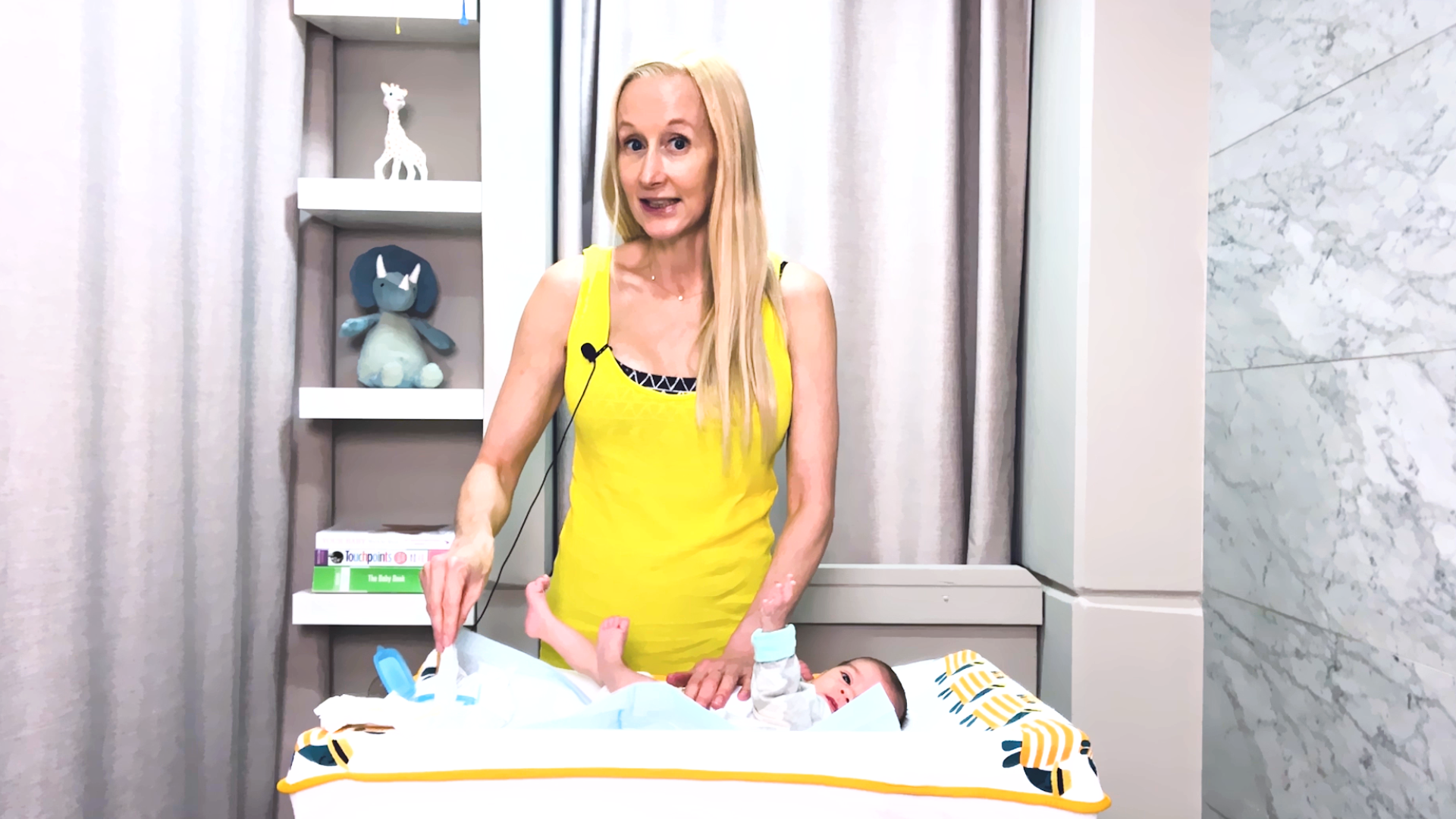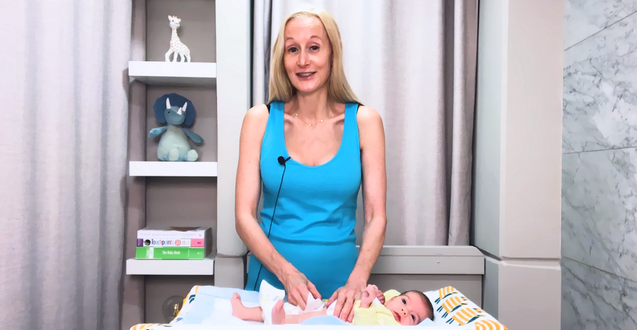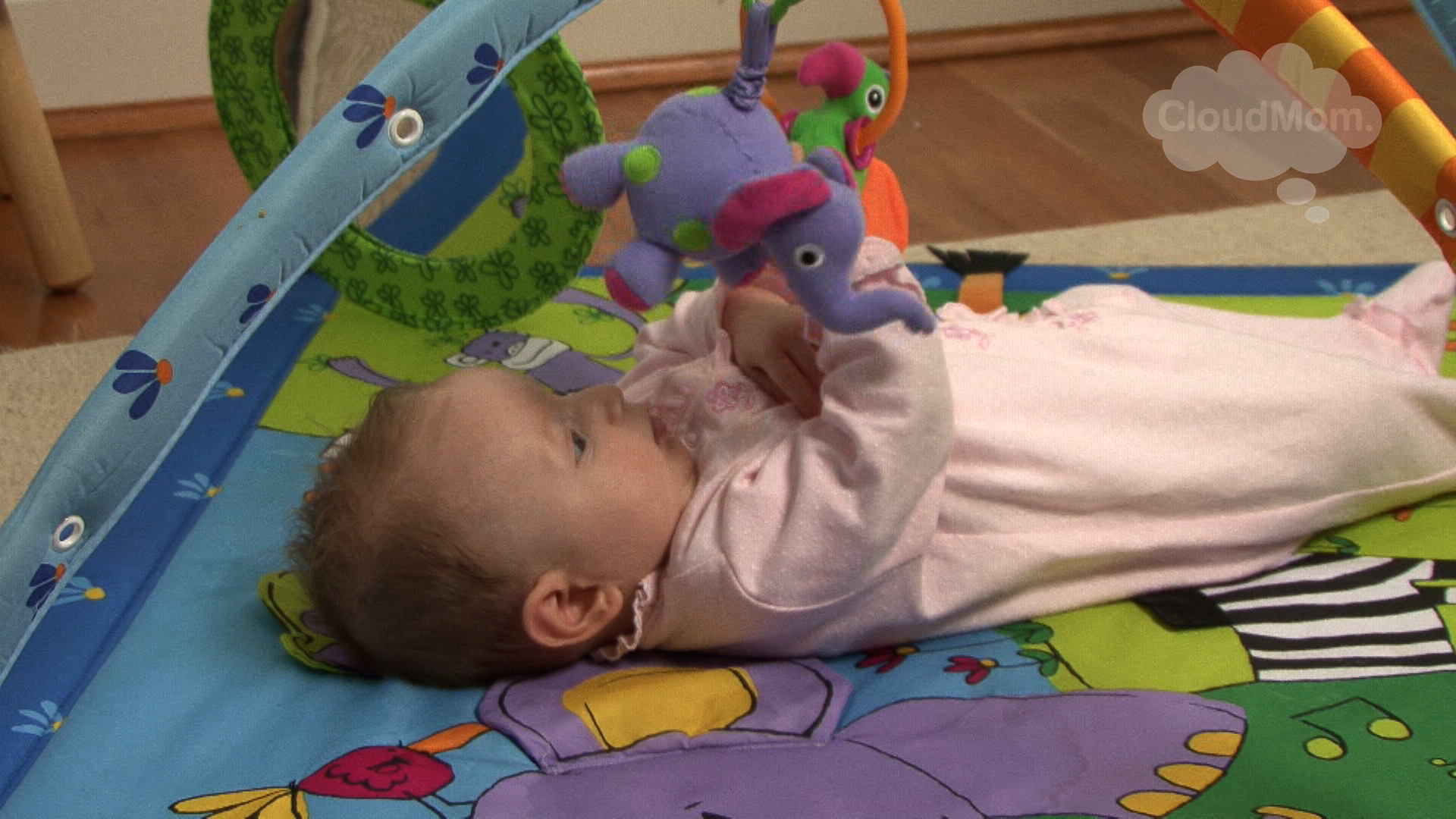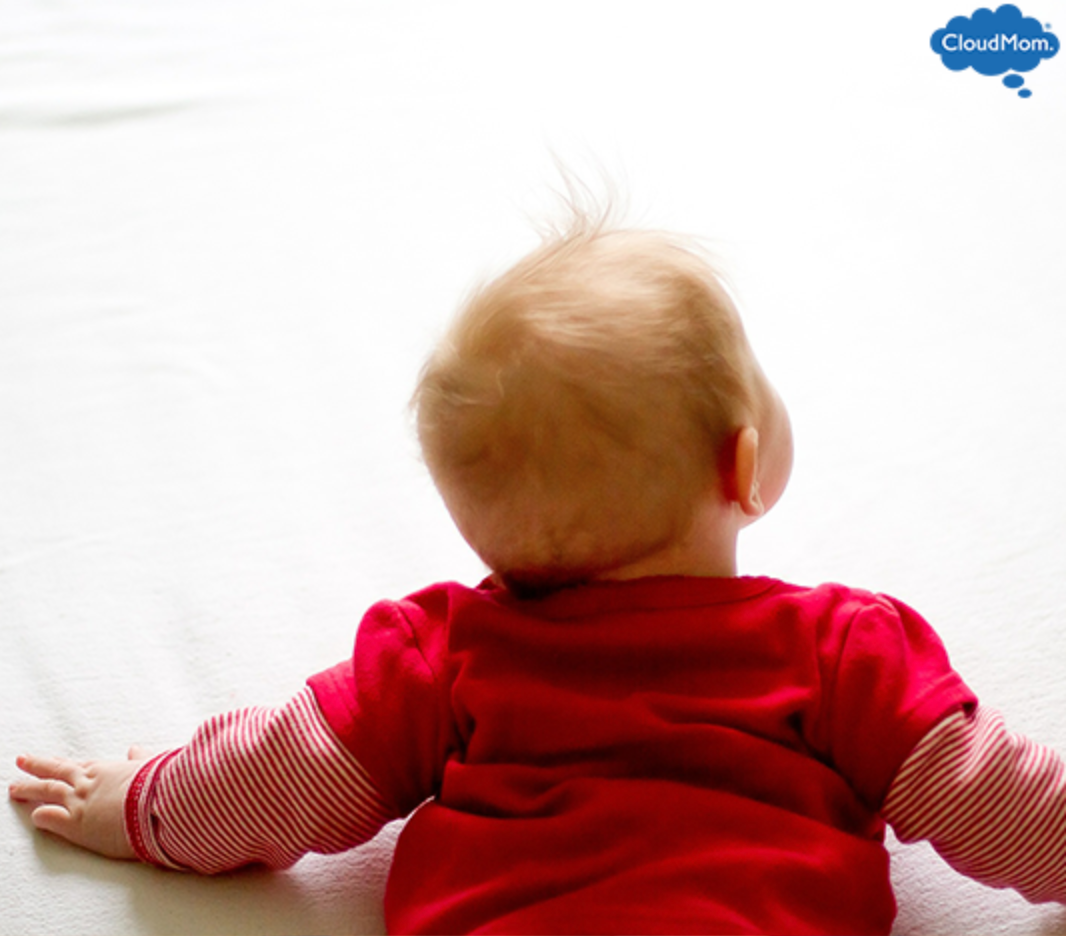Baby’s First Year: Month 8
- September 12, 2021
- by Melissa Lawrence
- Growth and Development of a 8 Month Old Baby
- 8 Month Old Baby Weight
- Developmental Milestones for a 8 Month Old Baby
- How Much do Babies See, Talk and Hear at 8 Months
- How to Handle Separation Anxiety in Babies
- What Solid Foods do I Give an 8 Month Old Baby?
- Breastfeeding, Solids, and Sleeping Schedule for a 8 Month Old Baby
- Why I Stopped Supplementing with Formula
- Feeding a Distracted 8 Month Baby
- What to do when Baby Bites During Breastfeeding
- Feeding and Sleep Schedule for 8 Month Old Breastfed Baby
- How to Feed Solid Foods to an 8 Month Old Baby
- Introduction of Finger Foods
- Bottle Feeding an 8 Month Old Baby
- Feeding, Solids, and Sleeping Schedule for a 8 Month Old Formula Fed Baby
- Bracey Update
Hello, moms and dads, and welcome to Month 8 with your baby and Month 8 with my baby, Bracey. Bracey is now 34 weeks old, but only 24 weeks old in terms of his corrected age, so in terms of milestones he’s closer to a 6-month-old baby than a 8-month-old. Yet, with each passing day, week, and month, he is catching up. Doctors hope that by the age of 2, premature babies have caught up to full-term babies in terms of developmental milestones. No matter at what stage your baby was born, remember to shut out the noise and be delighted by your baby’s unique growth trajectory. There is a huge range of normal and you want to enjoy your baby’s own accomplishments.
Growth and Development of a 8 Month Old Baby
Bracey’s 8 Month Checkup with the Pediatrician
Most babies will not see their pediatrician for an 8 month old checkup. Since Bracey was born 10 weeks premature, his pediatrician still sees him once a month. Such frequent visits are fine with me because I love hearing my pediatrician’s advice. Bracey’s pediatrician assessed him exactly as he had in prior appointments: he checked his ears and throat, measured his length and the circumference of his head, weighed him, and then checked out his back and neck strength and responsiveness by sitting him up. The doctor then wrote out his recommended diet for Month 8, which I will explain later on.
8 Month Old Baby Weight
The average 8-month-old baby boy weighs 19 pounds (8.6 kilos) and the average baby girl weighs 17 pounds 7 ounces (7.9 kilos). At his 8 month checkup, Bracey weighed 6.8 kilos (14.96 pounds), up from 1.490 kilos (3.278 pounds) at birth, so he has gained 5.3 kilos or 11.6 pounds since birth. Bracey’s position on the Spanish growth charts shows him MAKING HIS WAY INTO THE CURVE (for height) and near the curve (for weight and head circumference) with a trajectory that is steeper than the curve. This indicates that Bracey is catching up, which is exactly what you hope for with premies. Go Bracey!
Developmental Milestones for a 8 Month Old Baby
When do Babies Start to Crawl, Cruise, and Walk?
By 8 months, most babies hold up their head securely and turn it without wavering from side to side, sit up on their own, and push themselves up into a steady Cobra pose during Tummy Time. Bracey is beginning to sit up for a few seconds if I put his legs into a straddle and position his hands forward, although he wobbles after a few seconds. Try doing this with your baby if they are not sitting up yet, centering them with a toy. You can also try sitting in a straddle and placing your baby between your legs with their back against your torso. For the record, my older babies began sitting up at around 8 months or even later.
By 8 months, some babies can get to a sitting position from their tummy and stand while holding onto someone or something. Many babies are beginning to creep or army crawl (pull the body forward with the elbows while the legs drag behind), crawl, or cruise (walk while holding onto an object, like the coffee table or sofa). Although the average age for crawling is between 6 and 7 months, since the amount of time babies spend in Tummy Time varies tremendously, many babies do not crawl until 9 months. Crawling is actually not considered to be an essential developmental milestone and some babies go from Tummy Time to cruising and walking and never crawl. That said, babies who do spend time crawling are considered to have developed better hand-eye-body coordination. To encourage your baby to crawl, put them in Tummy Time and place an alluring object in front of them to motivate them to push forward.
Most babies crawl for quite a while before beginning to walk. The average age for babies to walk is between 9-15 months. My older kids walked at around 16 months.
Walking your baby around while holding their arms above their head (making sure not to pull too much), holding your baby up so that they can balance on their feet, and playing with your baby using toys, words and smiles while they are in Tummy Time are great physical activities.
Baby’s Vision and Coordination at 8 Months
By 8 months, your baby likely will be steady in holding their own bottle and in reaching and grabbing for things and will have perfected playing with their own hands and feet. I have noticed Bracey in Child’s Pose a lot during the last month, thereby understanding where the term comes from. Most babies can now pass objects from one hand to another and reach out and grab objects since vision and coordination have strengthened. Bracey’s aim is still a bit off and when he reaches for things or us; he is often a bit lower or higher with his hands than he needs to be.
Avoiding Choking Hazards with your Baby
Because babies tend to put everything in their mouths, at around this stage you have to be extra careful to limit their access to small objects that can end up in their mouth. The general rule is that if an object can fit into the diameter of the center of a toilet paper roll, your baby should not have access to it. This can get tricky if you have older kids and might require you to get organized regarding playtime so as to make sure your baby does not have access to smaller toys. When it comes to food, pureed foods and bite-sized portions of foods that turn squishy in the mouth and won’t get stuck in the throat are advised (I get more into food later).
8 Month Old Baby Activities
In my view, the two big opportunities when it comes to intellectual and physical play at this point are books and stackable colorful blocks. Try to get wood and not plastic, and make sure the paint on the blocks is safe. We love books by the writer Eric Carle (e.g., The Hungry Caterpillar) and wooden blocks by Melissa & Doug (such as this one with sorting cubes). We’ve been noticing with Bracey that books appear to him as colorful toys and he interacts with them, as such. I notice him uttering more sounds when I pull out a book.

Melissa & Doug Beginner Wooden Pattern Blocks Educational Toy With 5 Double-Sided Scenes and 30 Shapes


Melissa & Doug Deluxe ABC/123 1-Inch Blocks Set With Storage Pouch (50 pcs) - Letters And Numbers/ABC Classic Wooden Blocks For Toddlers And Kids Ages 2+


KIDS PREFERRED World of Eric Carle The Very Hungry Caterpillar Wooden Train Set, 15 Pieces




Melissa & Doug Standard Unit Solid-Wood Building Blocks With Wooden Storage Tray (60 pcs) - Classic Blocks For Toddlers Ages 3+


Melissa & Doug Beginner Wooden Pattern Blocks Educational Toy, 5 Double-Sided Scenes and 30 Shapes, 10.65” H x 10.65” W x 2.3” L (Beginning Skills and Activities)


Melissa & Doug Wooden Building Blocks Set - 100 Blocks in 4 Colors and 9 Shapes - FSC Certified


Melissa & Doug Classic ABC Wooden Block Cart Educational Toy With 30 1-Inch Solid ABC Wood Blocks For Toddlers Ages 2+




Melissa & Doug Deluxe Wooden Magnetic Pattern Blocks Set - Educational Toy With 120 Magnets and Carrying Case, Multi-color, 1 EA
How Much do Babies See, Talk and Hear at 8 Months
Eight-month-old babies can see at greater distances and with greater depth perception than previously and are even able to focus on rapidly moving objects. Try games like rolling a ball back and forth and hiding a toy under a blanket to encourage visual memory and a sense of cause and effect.
At 8 months, babies continue their babbling with sounds like “ba-ba” or “ga-ga.” Many babies will employ new consonants at this point, pairing them with vowels. Some will begin to say “ma-ma” and “da-da” in relation to their parents.
In terms of hearing, between 7 and 12 months, many babies will respond to their own name, look or turn in the direction of sounds, listen when spoken to, respond to simple requests like “come here,” look at things you talk about and begin to repeat sounds.
How to Handle Separation Anxiety in Babies
At around this stage, babies become aware of when their parents or loved ones are leaving and get upset. My one rule of thumb with this is to never try to sneak out on your baby. Rather, take time to explain that you are leaving and that you will be coming back. Make sure your baby is bonding with your caretaker, give a warning ahead of time, and say an affectionate and long goodbye. In most cases, your baby will calm down quickly after you have left. Stuffed animals and lovey toys tend to start to become important at this stage as they take the place of mom or dad, providing a sense of comfort and security.
What Solid Foods do I Give an 8 Month Old Baby?
If your baby has been on solids for one month, they can begin to expand their repertoire at 8 months. My doctor expanded Bracey’s diet to include fish and an egg yolk, which he is supposed to have mixed into his meal over the course of two days with olive oil. Bracey’s diet, therefore, consists of 4 meals given over the course of the day. In the morning, he nurses and then has cereal mixed with breastmilk or formula. When he wakes up from his morning nap, I breastfeed him again and then he has lunch, which is a pureed soup with chicken, beef or fish and a wide array of vegetables (and on two days, he gets half an egg yolk with a tablespoonful of olive oil). After his first afternoon nap, I breastfeed him again and he then has pureed fresh fruit, such as mango, pear, strawberries, peaches, and melon. He takes another nap from around 8-9 after which point I nurse him again before putting him to bed. My doctor told me that I could add cereal to his final top off bottle, if desired. I’ve now cut out the top off bottle and am exclusively breastfeeding, which I explain below.
Breastfeeding, Solids, and Sleeping Schedule for a 8 Month Old Baby
How Much Breastmilk does my 8 Month Old Baby Need
As I explained in Month 7, my doctor advised that given the introduction of solids, babies this age need less breastmilk than previously, and said to aim to give Bracey between 16 and 24 ounces (480-720ml) of breastmilk a day divided between 4-5 feedings, so figure 4-6 ounces (120-180ml) per feeding if you are feeding four times a day, and 3.2-4.8 ounces (96-144ml) per feeding if you are feeding 5 times a day.
Why I Stopped Supplementing with Formula
Up until Month 8, I was giving Bracey a large bottle of formula each night consisting of 10 or so ounces of goat’s milk formula. I had been supplementing breastmilk feedings at the breast with bottles of pumped breast milk or formula since Bracey came home from the NICU at 6 weeks, giving on average two bottles per day. Starting at Month 7, I began to have a very difficult time feeding Bracey. He would latch on and rip himself off almost immediately. I would move him from side to side and burp him, encouraging him to breastfeed as many times as possible. It was a frustrating experience. Meanwhile, Bracey was doing well at night (sleeping from around 11pm to as late as 9am in the morning), so I was reluctant to stop the formula since I thought he would wake up at night.
Well, lo and behold, I grew so frustrated with how unsatisfying it was to breastfeed him during the day that about a week ago, I cut out the late-night bottle. I fed him from the breast only and put him to bed at 10. He slept until 9am the next morning and got up and breastfeed for a longer time and in a more focused and less distracted fashion than he had in weeks. Same thing with the mid-day feeding, the afternoon feeding, the evening feeding, and the top-off feed.
What I realized is that Bracey needs a certain amount of breastmilk or formula per day and that by now at 8 months (although his corrected age is 6 months) he is able to get that amount during the daytime feedings. The big bottle of formula was stifling his appetite for the breastmilk and causing him to get frustrated with breastfeeding.
The other part of this is that I found myself producing more milk to meet the demand, which is what the body does. The more you tell your body to produce breastmilk, the more breastmilk your body is going to produce.
One other thing: nipple confusion has many variations, and in Bracey’s case, one bottle a day (and it was a big bottle of about 10 ounces) at the end of the day was enough to confuse him and discourage him from breastfeeding. He’s doing a lot better without that bottle. This level of nipple confusion stemming from only one bottle has never happened to me across 6 babies and 8 years of nursing so I wanted to share it with you guys.
Feeding a Distracted 8 Month Baby
That said, Bracey still gets distracted. What I do with this is the following: shut the door of his little room, pull down the shades, turn down the light, turn off music, and put away my phone. He plays a lot with my necklace and it seems he might pull it off. Now, I have to be very patient with him. Sometimes I’m in a hurry to get him finished and get on with my day but you have to just go with it. Each stage of breastfeeding requires a separate approach. Often, he sips a bit and then turns his head and looks away. Then, I coax him back. When I do so, I try to have as friendly and loving an approach as possible and not to appear frustrated. You want breastfeeding to be a loving, interactive experience with your child and never stressful. The other thing I do is to try to make a rule of reading him two books after each time I nurse him.
What to do when Baby Bites During Breastfeeding
Bracey has two lovely teeth and started biting me this past month. I have a hard-line rule on biting. You take the baby off. You say “NO” with a stern face, “no biting”. And then you put them on again. If they bite again, you take them off again and say “NO” again with a stern face, “no biting.” Babies don’t know what they are doing so don’t take this personally, but do not let them do it. That will kill your breasts, and they’ve been through enough. You’ll hear some experts recommending stopping a feeding if you are near the end of it, but I have never done that. You always have to get a full feeding.
Feeding and Sleep Schedule for 8 Month Old Breastfed Baby
During Month 8, you will continue incorporating solid foods into your daily schedule. Here’s the schedule that is working nicely for us. I am giving Bracey a wider array of vegetables, fruits and proteins, and more mixtures.
- 7am — breastmilk then multigrain cereal mixed with breastmilk or formula. Sleep 9:30-11am.
- 11am – breastmilk then a protein (fish, chicken, meat) vegetable purée w/ egg yoke and olive oil 2x per week. Sleep 1:30-3pm.
- 3pm — breastmilk then mixed fresh fruit purée. Sleep 6-7pm.
- 7pm — breastmilk then multigrain cereal mixed with breastmilk. Sleep 8:30-11pm.
- 11pm — breastmilk or formula. Sleep at 11:30pm. This can be called the “top off” feed.
Now, this schedule for me has gotten pushed back and often starts at 9 and there are only four feedings, so it’s more like 9am, 1pm. 5pm, 9pm at this point. But I have left the prior schedule up since my earlier babies still ate five times a day at this point and got up earlier, so I think Bracey is unique in this respect.
How to Feed Solid Foods to an 8 Month Old Baby
With Bracey, we tend to feed him on our laps, although he has a high chair. He’s a bit small for the high chair and tends to slip out if we don’t add a pillow, which is why he has ended up on our laps.
Introduction of Finger Foods
Depending on how mature your baby seems and how they are doing with solid foods, you can graduate at this stage from soupy, mixed purées to small portions of finely chopped finger foods. There is no hard and fast rule for when to introduce finger foods. Some recommend waiting until baby can sit up on their own, although that is not required; others say to wait until baby shows an interest in the food.
If you feel that your baby is ready for solids, put your baby in their high chair and spread out some finger foods in front of them. Here is a list of first finger foods that you can start with: mashed sweet potato, cooked and soft carrot, peas, avocado, raspberries, tofu, cheerios, overripe pear, and banana. There are many others you can try (including scrambled egg, which gets messy), but this is what I began with. Foods to avoid include pieces of raw vegetables, hard fruits, whole grapes, grape tomatoes, raisins and other dried fruit, peanuts, nuts and seeds, and peanut butter or other butters (which can get stuck in baby’s throat).
Bottle Feeding an 8 Month Old Baby
How Much Formula to Give an Eight-Month-Old Baby
As is the case with breastmilk, at 7 months, the amount of formula your baby consumes likely will begin to decline based on the introduction of solid foods. Seven-month-old babies should be consuming about 6-8 ounces (180-240ml) of formula per feeding over four-five feedings (likely four) daily. Pay attention to your baby’s cues and if your baby is burped and rejecting more formula — as long as your baby has wet and dirty diapers and is gaining weight — you should not continue to feed them when they indicate they are full.
Feeding, Solids, and Sleeping Schedule for a 8 Month Old Formula Fed Baby
- 7am — bottle then multigrain cereal mixed with breastmilk or formula. Sleep 9:30-11am.
- 11am – bottle then a protein (fish, chicken, meat) vegetable purée w/ egg yoke and olive oil 2x per week. Sleep 1:30-3pm.
- 3pm — bottle then mixed fresh fruit purée. Sleep 6-7pm.
- 7pm — bottle then multigrain cereal mixed with breastmilk. Sleep 8:30-11pm.
- 11pm — bottle or formula. Sleep at 11:30pm. This can be called the “top off” feed.
Over time your baby will drop the 11pm feeding, as well.
Bracey Update
At his 8 month appointment, Bracey weighed 6.8 kilos (14.96 pounds), up from 1.490 kilos (3.278 pounds). He’s beginning to sit up on his own for a few seconds at a time on his own, before toppling over. We hold him up as much as possible to encourage him to gain strength in his legs and balance. He enjoys Tummy Time and rolling around on his back and grabbing his feet, and appears to be much more mobile in his movements.




Bracey continues to smile and babble at us, pulling in a few consonants such as “ba” and “ga.” He’s having fun reading his books. He enjoys playing with paper bags (who needs those fancy toys, right?). A special visit from close friend Clementine topped off a magical month.
Bracey is breastfeeding well since I dropped the late night top off feed and sleeping at night from around 11pm to as late as 9 and sometimes even 10 in the morning. So proud of our little miracle.
Thank you so much for reading and watching and see you back soon for Month 9.
Resources
VeryWellFamily
WebMD
Parents.com
Whattoexpect.com
Kidshealth.org
American Optometric Association











Comments